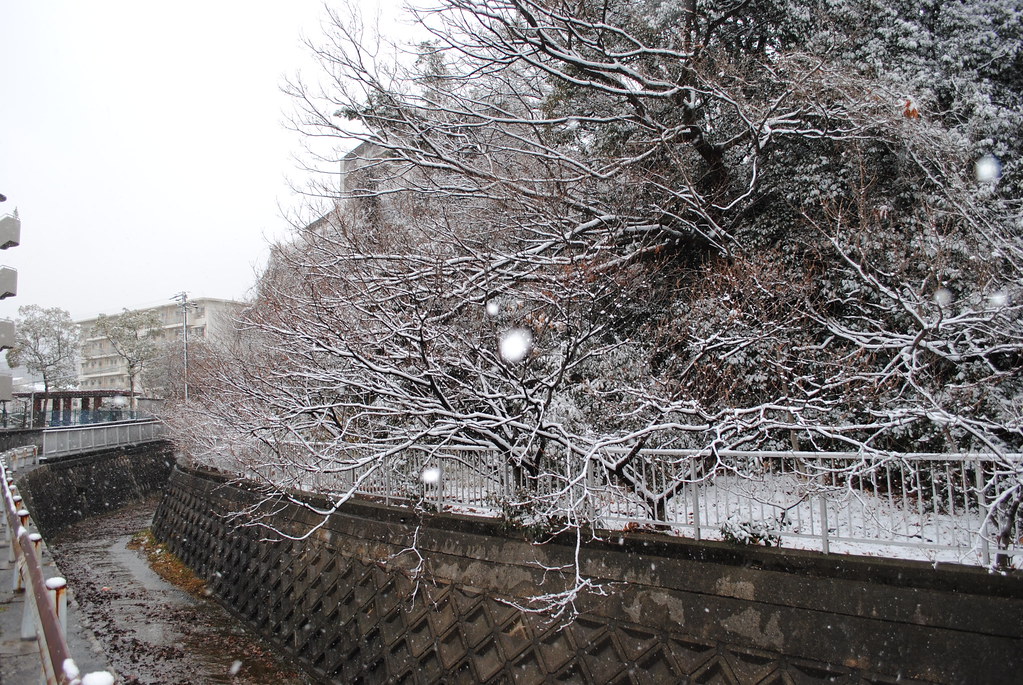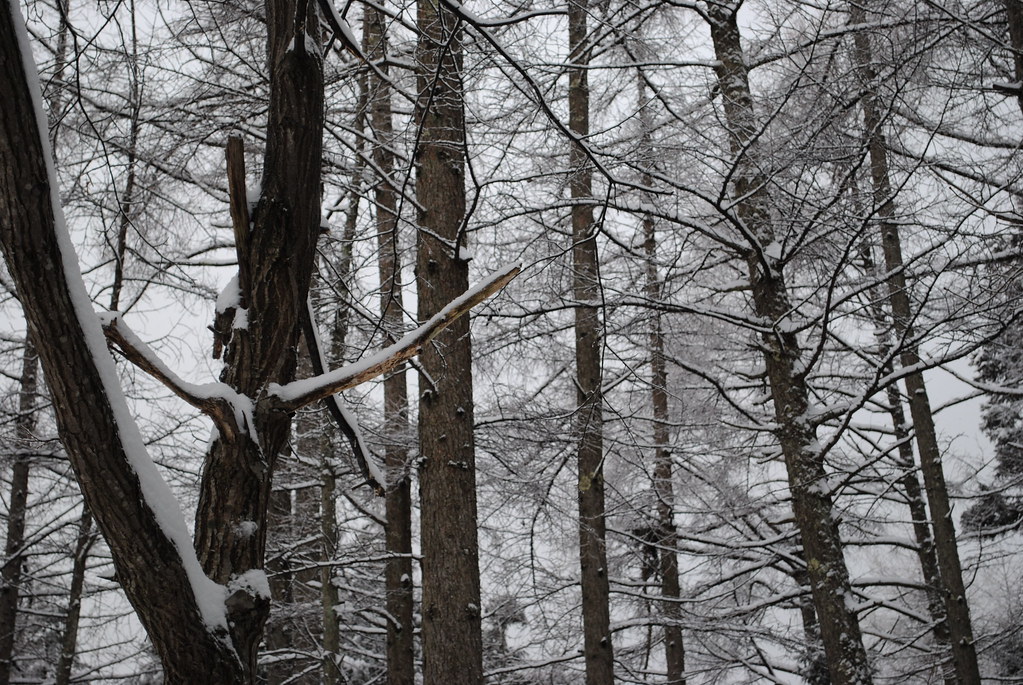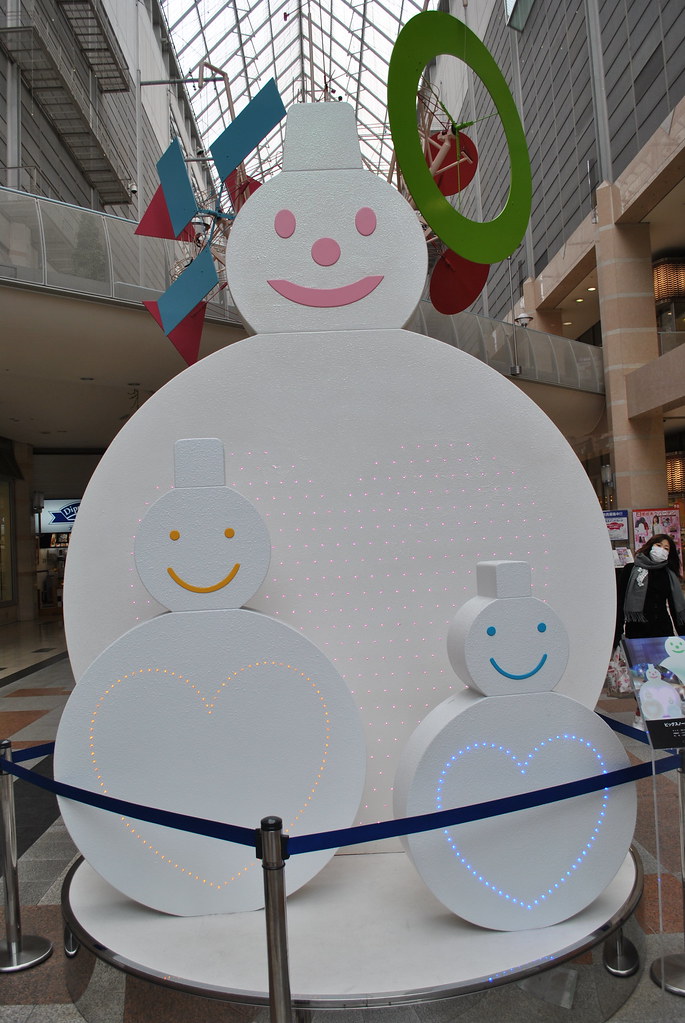In Japan, 冬 is and has always been seen as a season to stay indoors and be inactive. Particularly in the colder parts of the country, people are at the mercy of the elements at this time of year (which is probably hard to imagine if you're currently sweltering in Australia). Unlike our relatively mild Winter, 冬 is bitterly cold and that, coupled with Japan's notorious lack of insulation, means that going out is probably the last thing on people's minds.
That is, of course, unless you've turned out for the 雪祭り (ゆきまつり - yuki matsuri - Snow Festival) in 札幌 (さっぽろ - Sapporo) - a huge festival that takes place in Japan's northern island of 北海道 (ほっかいどう - Hokkaido) early every February. Thankfully, this year 札幌 enjoyed an abundance of snow - apparently some years, light falls force the organisers to truck snow and ice in from further north!
雪祭り features slides for children carved out of ice blocks, colossal snow sculptures and even event and music stages made of ice. Rest assured that the food, at least, is hot - made from deliciously fresh vegetables, dairy products, fish and meat from what seems like the agricultural food bowl of Japan. 北海道 makes me think of Margaret River in some ways - if something is gourmet, that's probably where it's from. I cannot recommend a bowl of 北海道 ラーメン (ramen) strongly enough. If 札幌 is too far for you though, you could always get your 冬 festival fix at 裸祭り (はだかまつり - hadaka matsuri - The Naked Festival)!
Moving further south and closer to the Inland Sea, 神戸 (こうべ - Kobe) is one of the warmer areas of 兵庫 (ひょうご - Hyogo) and remains relatively snow-free most years. However, 2011 was one of the colder ones; several days of flurries and heavier falls put a blanket of snow over the whole city area. The majority of the time, the snow is restricted to the highlands and central-northern areas of 兵庫 near the Japan sea such as 豊岡 (とよおか - Toyooka) and 城之崎温泉 (きのさきおんせん - Kinosaki Onsen).
Needless to say, these areas tend to be skiing and snowboarding meccas at this time of year and given the country's relatively small size, it's possible to head off for a trip on a Friday and be back at your desk bruised but content first thing Monday morning. The most popular spots are in northern 兵庫, 北海道 and 長野 (ながの - Nagano), of Winter Olympics fame. Once the snow has melted, I've heard that these resorts are a popular destination for 夏 school trips and camps looking to take advantage of the cooler regions and escape the heat.
In these really cold areas, those not skiing or snowboarding will likely be huddled under the 炬燵 (こたつ - kotatsu), a table with an electric heater built underneath it and covered with a 布団 (ふとん - futon - quilt) to keep the heat in. 炬燵 are surprisingly good at keeping you warm on chilly nights, the problem being that you eventually have to get up and leave the cosiness behind. In the past, drafty old houses were warmed with 囲炉裏 (いろり - irori), charcoal braziers or hearths sunk into the floor in the middle of the room. 囲炉裏 were dual-purpose - they could be used as both heaters and stoves, which explains why cook-at-the-table 鍋物 (なべもの - nabemono - hot pot) has been a 冬 staple for decades. During feudal times when poverty was widespread though, fresh food and meat were very scarce and for the most part, 冬 meant surviving on 漬物 (つけもの - tsukemono - pickled vegetables) left over from the harvest and 味噌汁 (みそしる - misoshiru - miso soup), unless you were lucky enough to live close enough to the sea to catch fish.
The history of 冬 goes back way beyond even that, however. All four seasons have associations with mythical animals, colours, elements and directions based on ancient Chinese mythology imported to Japan more than a thousand years ago:
- 春 is represented by 青竜 (せいりゅう - seiryuu - The Azure Dragon), 木 (き - ki - wood) and 東 (ひがし - higashi - east)
- 夏 is represented by朱雀 (すざく - suzaku - The Vermillion Bird), 土 (つち - tsuchi - earth) and 南 (みなみ - minami - south)
- 秋 (あき - aki - Autumn) is represented by 白虎 (びゃっこ - byakko - The White Tiger), 火 (ひ - hi - fire) and 西 (にし - nishi - west)
- 冬 is represented by 玄武 (げんぶ - genbu - The Black Turtle), 金 (きん - kin - gold) and 北 (きた - kita - north)








Thanks a lot to Adam, who very kindly sent on his photos of 雪祭り for this post.
ReplyDeleteI was told recently that the Oni (Ogres) of Setsubun are often depicted wearing a tiger-skin loincloth because the Chinese Animal Zodiac direction allocated to Tigers is East-Northeast, appartently an unlucky/evil direction.
ReplyDeletehttp://www.stanssewingsupplies.com/catalogs/store.asp?pid=72603 has a nice picture of Chinese Animal Zodiac directions